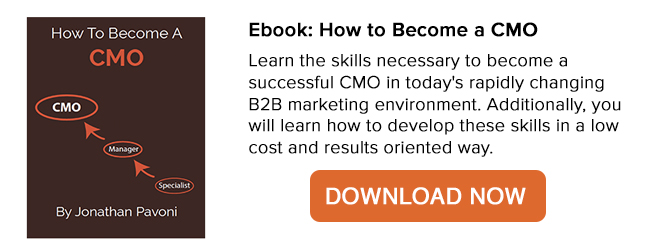 In my first installment of this three-part series, I discussed specific inbound marketing campaigns and tactics that are best suited for lead generation.
In my first installment of this three-part series, I discussed specific inbound marketing campaigns and tactics that are best suited for lead generation.
This entry will focus on strategies one can use to attract prospects and the final post (coming soon) will explore customer engagement.
Before diving in, here's a quick refresh on how I'm defining each group:
- A lead is an individual who clearly fits the buyer persona that your company is targeting. You might have some initial pieces of information on this person such as his/her phone number, email address, job title and company name.
- Prospects, on the other hand, are people who have shown some level of interest in your product or service. Prospects have either responded to a campaign, found your company through search, subscribed to your blog, followed you on Twitter, downloaded your content or attended a webinar.
- Finally, customers are individuals who have purchased something from your organization.
So now that we've revisited those definitions, let's move on to how one builds a prospect-attracting campaign.
Using Inbound To Attract Prospects
As previously mentioned, a prospect is an individual that has engaged in some way shape or form with your company. They could have followed your company on Twitter, downloaded a piece of your content, attended a webinar, or subscribed to your company’s blog.
Once there has been this initial contact and interest shown in your business, you need to figure out how to leverage this activity into an ongoing dialog where you deepen the relationship over time. Ask yourself: what are the best inbound marketing tactics to use to structure a campaign designed to deepen this fledgling relationship?
To grow the relationship, you need to give the prospect what they want. But what is it that they want? Here is a secret; they want to be educated. By giving these prospects high quality educational content on a frequent and recurring basis, you are going to strengthen the budding relationship that you have started.
How do you effectively do this? Well, first and foremost, you need to be developing high quality industry specific content in a variety of different forms. The forms could be industry e-books, customer success stories, white papers, or recorded webinars.
There are some important things to keep in mind as you develop content to deepen prospect relationships. First, you need to map the content to stages of the buying cycle. What I mean by this is that not every prospect that interacts with your company is at the same stage. Some prospects will be very educated on your company’s category, while others will be just beginning to understand what you do.
In fact, research has shown that there are three main categories that people go through when evaluating a purchase: the research stage, the comparison stage and the purchase stage. It is important to develop content for people in all three categories of the buying cycle.
Secondly, you should develop a disproportionate amount of content for people that are in the research stage. 75% of the people that come to your website are in the research stage, 20% are in the comparison stage, and 5% are ready to buy (source). Let these percentages dictate the amount of content that you develop for each stage.
Once you have developed this content, you need to figure out a distribution channel to put this content in your prospect’s hands so that you can expand the relationship. There are a couple of ways to build and inbound campaign to do this:
- Smart Email Nurturing Campaigns: by using drip email nurturing campaigns, you can quickly and easily develop automated campaigns that deliver high quality content to your hottest prospects on topics that are of interest to them.
- Resources Page: Every website should have a resources page. A resources page is a repository for all of your content. Prospects should be able to go there and use it like a library, where they can easily look for resources that are of interest to them.
- Blogging: Blog about industry topics and then put calls to action at the bottom of your blog post so that prospects can deepen their understanding of the subject matter.
Company Example:
A company that I think exemplifies these best practices of moving prospects efficiently through the stages of the buying process is Hubspot. One aspect of Hubspot that I admire is how they develop excellent resources for their buyer personas: CMOs, agencies and marketing managers. They also understand the stages of the buying cycle and develop a significant amount of educational (top of the funnel) content solely designed to help marketers advance their skillsets.
If we look at their content library, there is a laundry list of recorded webinars, industry e-books, and downloadable templates on all topics as they relate to marketing. However, Hubspot doesn’t just let these valuable resources sit on the shelf; they frequently reach out to their prospects via email to deliver new resources, and blog posts helping them deepen their relationships with prospects and move them further down the sales funnel.
What other tactics would you use to attract prospects?


